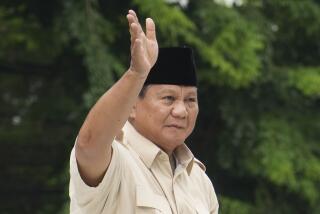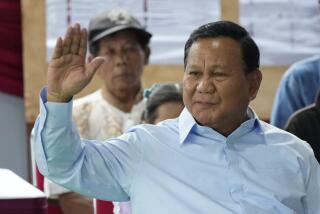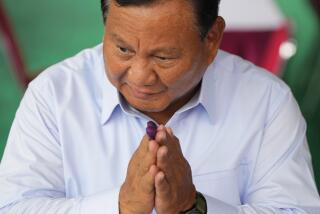The Suharto Era
- Share via
One of the last Cold War-era leaders, President Suharto ruled Indonesia unchallenged for 32 years, dominating its society and tolerating little dissent.
Rise to power: As an army general, Suharto crushed a leftist coup in 1965. By the following year, he had essentially seized control of the country from the nation’s founder, President Sukarno.
Prosperity and an iron fist: Suharto used the support of the military to crush political dissent, muzzle the media and create a rubber-stamp political system that allowed him to win seven five-year terms as president. But he won U.S. backing. His supporters hailed him for creating stability, fostering development and reducing poverty. Indonesia, rich in natural resources, began to attract foreign investment, and he transformed an economy on the brink of ruin into an Asian “tiger.” But his regime also became marked by corruption and cronyism, as segments of the national economy were carved up and given to family and friends.
The fall: Suharto’s fortunes began to sour in mid-1997 with the collapse of economies across Asia. The value of Indonesia’s currency plummeted more than 70%; the stock market sank; and Suharto reluctantly accepted a $43-billion rescue package and the painful International Monetary Fund reforms tied to it. On May 4, Suharto’s government rolled back fuel subsidies. The hikes triggered riots, as the poor and middle class added their voices to longtime student protests. Suharto’s support collapsed.
More to Read
Sign up for Essential California
The most important California stories and recommendations in your inbox every morning.
You may occasionally receive promotional content from the Los Angeles Times.













